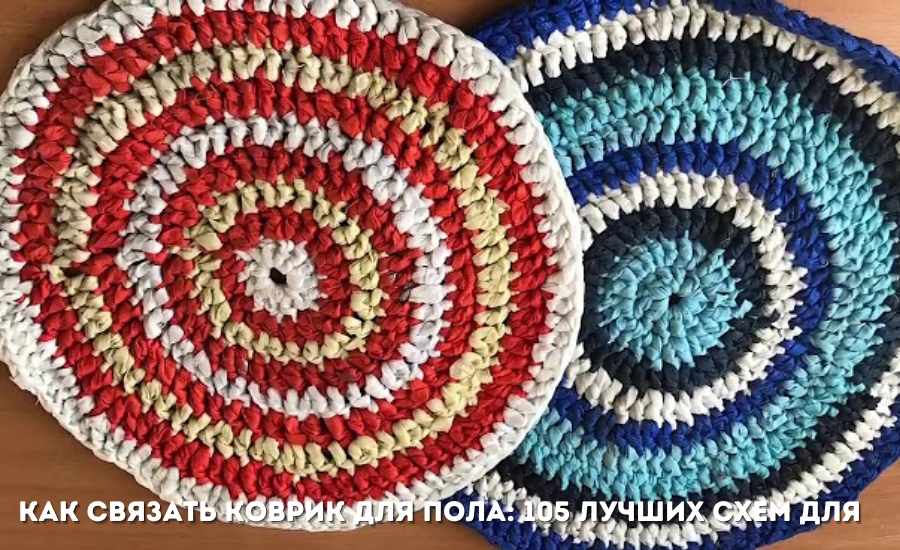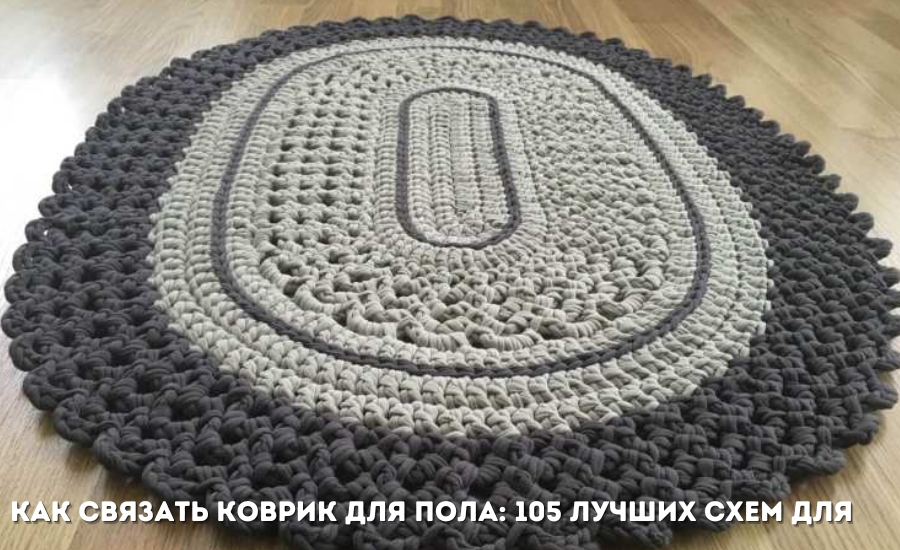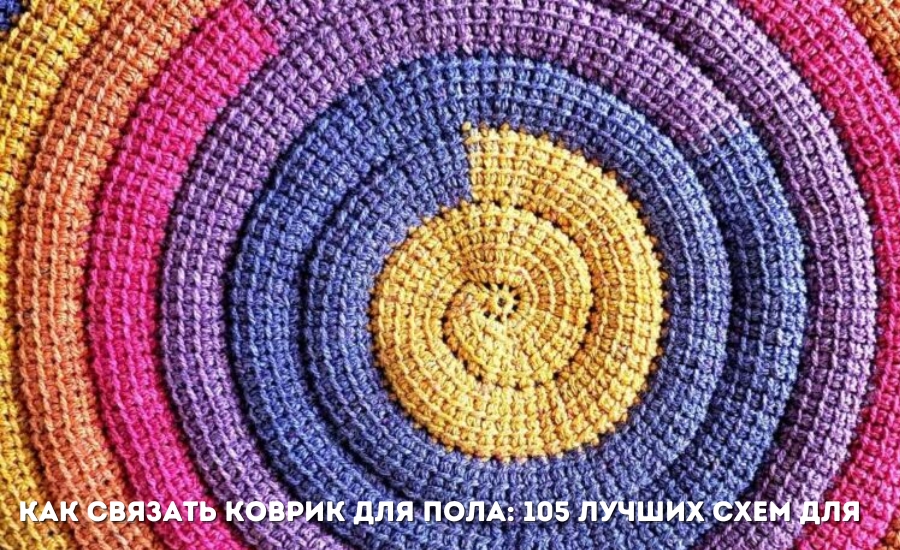Knitting a floor mat is not just a fun hobby; it’s also a fantastic way to add a cozy and unique touch to your home. Knitted rugs are increasingly popular because they are practical, versatile, and a great way to express your creativity. Whether you want to brighten up your living room, add comfort to your bedroom, or create a relaxing bathroom space, a knitted rug can be the perfect solution.
In this article, we’ll guide you through как связать коврик для пола: 105 лучших схем для beginners and seasoned crafters alike. You’ll learn about materials, techniques, and tips for making a beautiful knitted rug that will impress everyone.
What You Need to Start
Basic Materials for Knitting a Rug
To begin your journey in knitting a floor mat, you’ll need some basic materials. The most important item is yarn. The quality of yarn will determine how soft and durable your rug will be. You can choose from natural yarns like cotton and wool or synthetic options like acrylic and nylon. Thick and dense yarn is usually best for rugs since it can handle daily wear and tear.
You’ll also need some tools. The main tool for knitting is either a hook or needles, depending on your preferred technique. The size of the hook or needles should match the thickness of your yarn. Other helpful tools include scissors for trimming threads, a yarn needle for weaving in ends, and a measuring tape for precise dimensions.
Choosing the Right Yarn
Choosing the right yarn is a key step in making your rug. If you need a strong rug for high-traffic areas like hallways or kitchens, opt for coarser yarn, such as cotton or synthetic blends. These materials are easy to clean and maintain their shape over time.
Color selection is just as important. Bright colors can bring life to a room, while neutral shades create a calm and cozy environment. Consider your home’s overall style when selecting yarn to ensure your rug fits perfectly with your decor.
Preparing to Knit Your Floor Rug
Basic Knitting Techniques
Before you start knitting, it’s essential to learn some basic techniques. If you’re a beginner, focus on chain stitches, single crochets, and double crochets. These basic stitches are simple to learn and can be combined to create various patterns and textures.
Understanding how to read knitting charts is also important. Each chart uses symbols to indicate which stitch to use and the order to follow. Learning these symbols will help you avoid mistakes and lay the groundwork for more complex projects.
How to Calculate Rug Size
Before starting, measure the area where you plan to place the rug. Make sure the rug will not obstruct movement and fits well in the space.
Also, calculate how much yarn you’ll need. The larger the rug, the more yarn you’ll require. For instance, for an average round rug with a diameter of 100 cm, you’ll need about 500–600 grams of yarn.
Various Techniques for Knitting Rugs

Popular Rug Knitting Techniques
There are many knitting techniques to create beautiful rugs. One of the simplest is crocheting. This technique allows you to create rugs in various shapes, including round and rectangular styles. For beginners, simple patterns like alternating single and double crochets are great choices.
Knitting with needles is another popular method among enthusiasts. This technique lets you create dense patterns and intricate textures that add style and warmth to your home.
Macramé Floor Rugs
Macramé is an ancient knotting art that works wonderfully for making rugs in a boho style. Macramé rugs are typically made with coarser yarn or cords, resulting in durable and textured items.
Basic macramé knots include the square knot, double half hitch, and lark’s head knot. You can combine these knots to create fascinating patterns and voluminous textures, making macramé rugs perfect for bohemian or eco-friendly interiors.
Patchwork Knitted Rugs
If you have leftover yarn in different colors, consider making a patchwork-style rug. These rugs consist of small pieces that you join together to create one unique item.
The patterns for patchwork rugs can vary in complexity, giving you creative freedom. This style allows you to use up leftover yarn while crafting a one-of-a-kind rug that showcases your personality.
You May Also Like: https-mobilehomeexteriors-com
How to Knit Different Shapes of Rugs
How to Knit a Round Rug
Round rugs are a classic choice that suits almost any interior. To knit a round rug, start from the center and gradually expand your work. Double crochet stitches are commonly used as they help to increase the size quickly.
Here’s a simple pattern: Begin with a ring of chain stitches, then crochet double crochets, increasing the number of stitches in each round. Each new round should have a few more stitches than the previous one to ensure the rug expands evenly without curling.
Knitting Oval-Shaped Rugs
Oval rugs add a sophisticated touch to any room. They are slightly more challenging to knit than round rugs because you need to maintain symmetry.
Start with a chain of stitches for the base of your oval. Then, crochet single or double crochets along the sides of the chain. Increase stitches at the corners to maintain the oval shape and prevent puckering.
Square and Rectangular Rugs
Square and rectangular rugs are versatile solutions for any space. They can serve practical purposes, such as in hallways or kitchens, while also adding a decorative touch.
A simple way to knit a square rug is to use single or double crochets around the perimeter. Alternatively, you can join square motifs knitted separately and combine them into one piece.
Decorating Your Knitted Rug
Adding Tassels, Pom-Poms, and Fringe
Make your rug stand out by decorating it with tassels, pom-poms, or fringe. These elements add originality and flair, turning your rug into a beautiful accent piece.
Tassels and fringe work especially well with rugs in ethnic or boho styles. To make tassels, take several strands of yarn, fold them together, and tie them at the base.
Creating Patterns and Textures
Knitting allows for plenty of experimentation with colors and patterns. Geometric designs like diamonds, stripes, or zigzags can add visual interest and texture to your rug.
To create raised patterns, try using front post stitches. These stitches form embossed lines that make your rug feel more textured and inviting.
Caring for Your Knitted Rug

How to Wash Your Rug Properly
To keep your knitted rug looking great for years, it requires proper care. Washing by hand is the best method to avoid deformation. However, some rugs made from synthetic yarn can be machine washed.
For hand washing, use a gentle detergent and cold water. After washing, gently squeeze the rug to remove excess water and lay it flat to dry.
Tips for Making Your Rug Last
To prolong the life of your rug, consider reinforcing it. Using a non-slip rug pad can prevent quick wear and help keep it in place.
Additionally, avoid placing knitted rugs in high-traffic areas, as this can lead to faster wear on the yarn.
Conclusion
Creating a knitted rug is an exciting and rewarding activity that not only results in a unique decor piece but also allows you to express your creativity. In this article, we discussed как связать коврик для пола: 105 лучших схем для beginners and experienced crafters alike.
Don’t hesitate to experiment with patterns, colors, and textures, and your rug will become a true centerpiece in your home.
FAQs
Q: What materials do I need to knit a floor mat?
A: You will need yarn (preferably thick), knitting needles or a crochet hook, scissors, a yarn needle, and a measuring tape.
Q: How do I choose the right yarn for my rug?
A: Choose thick yarn for durability; cotton or synthetic fibers work well. Consider colors that match your interior decor.
Q: What basic knitting techniques should I learn for making rugs?
A: Start with chain stitches, single crochets, and double crochets. These techniques form the foundation for various patterns.
Q: How can I calculate the size of my rug?
A: Measure the area where the rug will be placed. Make sure to account for extra space for comfort and movement.
Q: What are some popular rug knitting techniques?
A: Popular techniques include crocheting, knitting with needles, macramé, and patchwork-style rugs using leftover yarn.
Q: How do I care for my knitted rug?
A: Hand wash with mild detergent in cold water, then lay flat to dry. Avoid high-traffic areas to extend the rug’s life.
Q: Can beginners knit a floor rug?
A: Yes! Beginners can start with simple patterns and gradually progress to more complex designs as they gain confidence.
If You Want the Latest Blogs, Stay with DenverInsiders

Leave a Reply